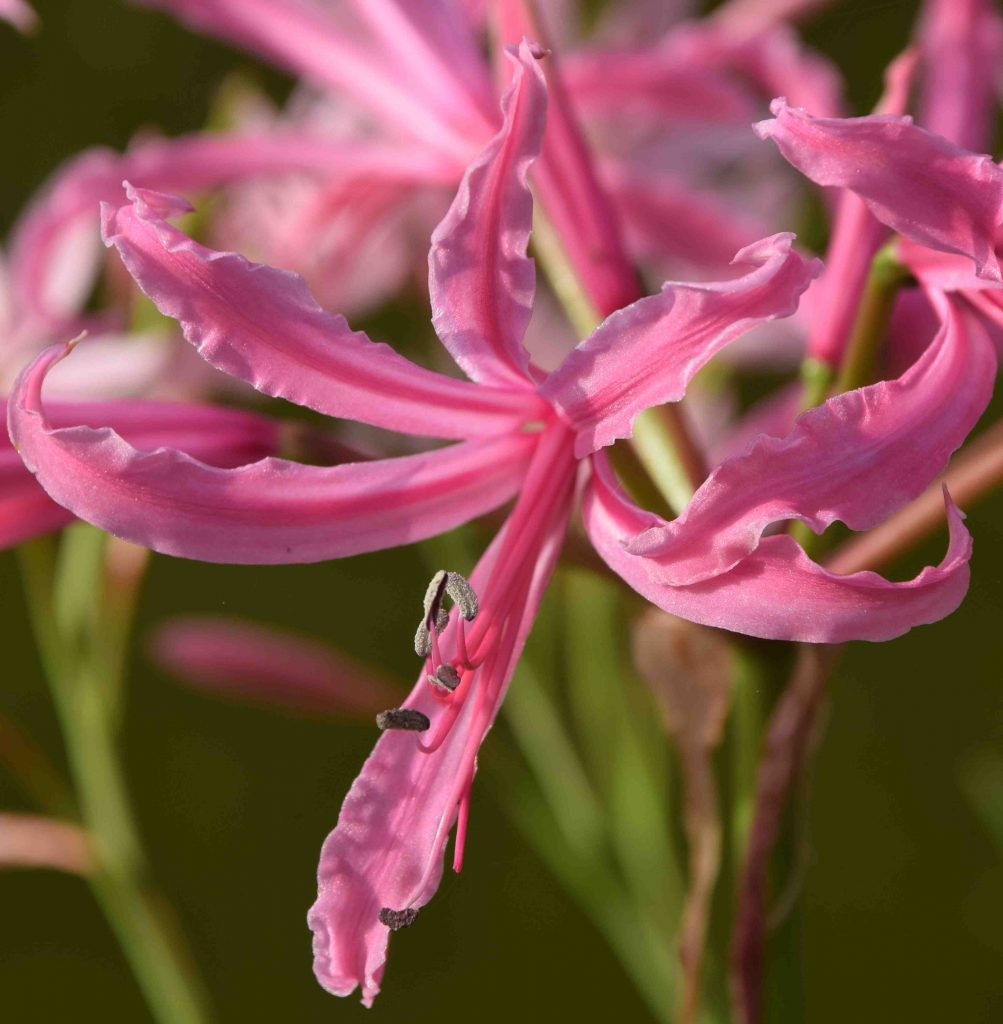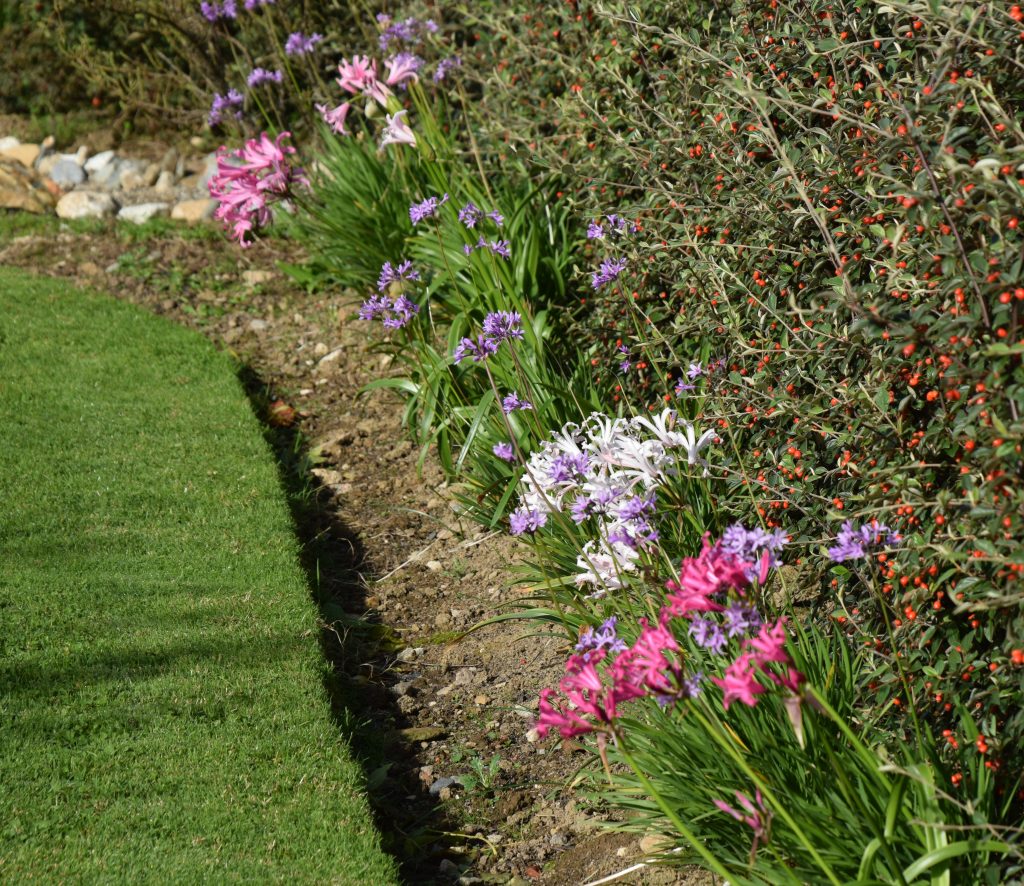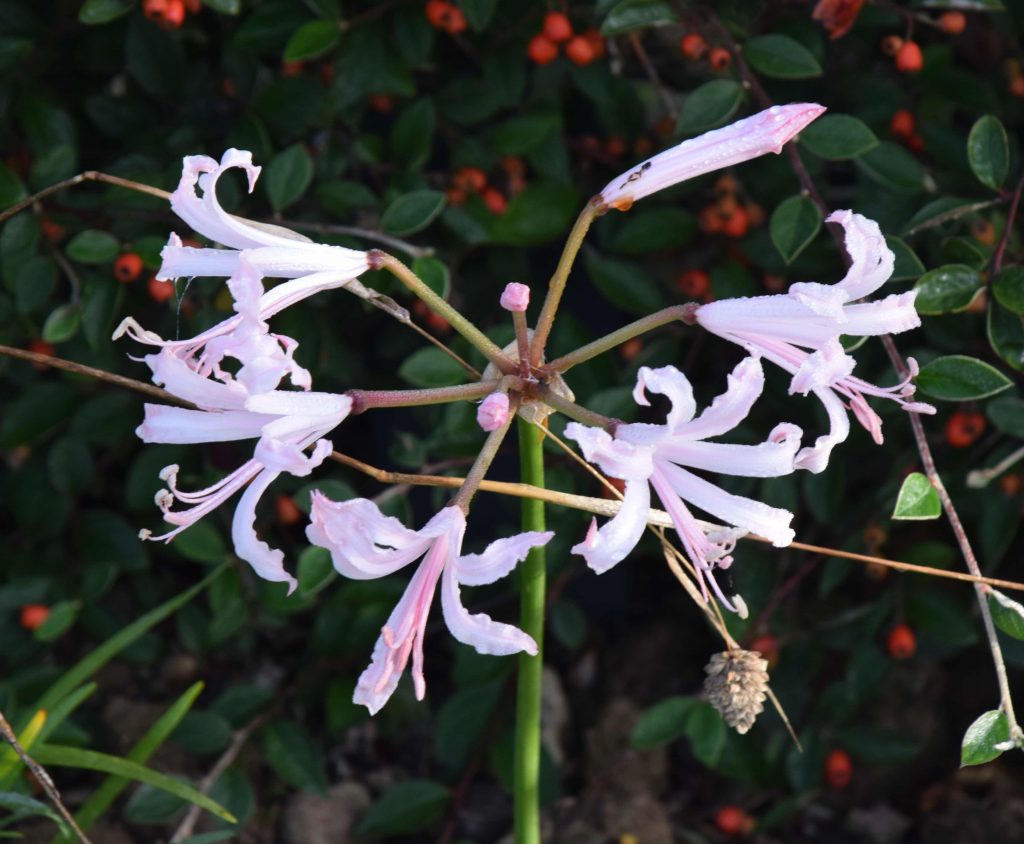
As autumn approaches, and September arrives, I always feel a little sad that summer is fading away. Sometimes even the thought of planting all the tulips and daffodils is not enough to cheer me up. Fortunately there are some autumn flowers that are so bright and wonderful that I look forward to seeing them and they make autumn a season to relish and not just tolerate! Among the best are the autumn bulbs and the brightest of these are nerines, those South Africans that seem to find life here just to their liking.
Why grow it?
There are many species of nerines and most will not tolerate our winters outside. But Nerine bowdenii, in gorgeously outrageous ‘Barbie’ pink will grow outside in a sunny spot and flower reliably. In recent years new varieties have been introduced to extend the colour range from white to deep pink and now there are ‘Amarines’ which are hybrids of the, slightly tricky, hardy amaryllis with nerines, which have larger flowers and have proved reliable in my garden. The flowers of all are at their peak in October and last a month or so. They thrive in dry, sunny spots and are perfect for that hot, dry bed beside the house.
Where to grow it
Hardy nerines need a sunny spot and are perfect for a raised bed so that they have good drainage. They produce new leaves in spring and are green in summer. The leaves die down in autumn and then the flower stems are produced from the bare bulbs. Then the plants are dormant in winter. This is different to the tender nerines that need to be kept in a greenhouse. Nerines dislike root damage and if you can buy them in pots, now, just coming into bloom, they will grow away and bloom easily. You can buy bare bulbs in autumn and in spring and they will establish but they will take a year or two to settle down.

Where to start
Ideally buy some in a pot now. Nerines like to be crowded and as they grow they often jostle for space and push each other out of the soil. There is no need to worry about this. If planting potted bulbs just pop them in but perhaps not as deep as they are in pot because the top of the bulbs should be above soil level. If planting bare bulbs space them about 8cm apart. The bulbs will divide themselves and form clumps but I would always suggest you plant at least five or seven at a time.
There are many kinds available as well as the common Nerine bowdenii. All are treated in the same way. I always like to try something different but I have to say that the common, bright pink kind is hard to beat and the colour is so dramatic that it is possibly my favourite.

What to do
Once planted, you don’t have to do much to nerines apart from clear away old leaves and to enjoy the flowers, possibly picking some for the house. It is worth feeding crowded clumps and standard tomato feed once a month is ideal. You can grow them in pots, always in John Innes No 3 compost, but remember that they will take a few years to settle down, but then are no trouble and will make an amazing show.
Who will like this?
Anyone who wants vibrant colour in autumn
Plant them with …
Because of their need for good drainage and their love of sun they are good companions for small woody herbs like thyme and with lavender and sage. Any silver foliage will show off the pink flowers.
Weekly reminders
Sow annuals
Annuals are plants that grow and flower in a single year. They include many of our favourite summer plants including marigolds and many poppies. But some hardy annuals, that do not need protection from frost, can also be sown in September, where they are to bloom. The advantage of doing this is that they will bloom at least a month earlier and they will make bigger, more robust plants with more flower and for much longer. Annuals to sow this month include calendulas, nigella, larkspur, poppies and limnanthes. And next month is the right time to sow sweet peas for the best blooms next summer.
Harvest herbs
If you grow herbs you know how much better home-grown is than packets of dry herbs. But you can preserve some herbs now for use in winter. ‘Soft’ herbs such as basil and parsley do not dry well so chop them and blend with butter and freeze for convenient use in winter. Alternatively chop and mix with oil or flavour oil by gently heating the herbs in oil (do not boil – just warm) and drain and store.
Prune raspberries
Autumn-fruiting raspberries should be cropping now but summer-fruiting raspberries need attention. The old canes that have cropped should be cut to the ground and the new canes, that grew this year, should be tied to supports and the will crop next summer.
Spring bulbs
Don’t forget that it will soon be time to plant spring-flowering bulbs. The most popular soon sell out so don’t leave it too long to buy yours!